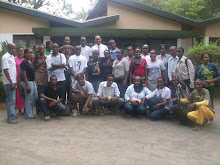Mkwaju is a large tree to 30 meters in diameter with an extensive dense crown. The short bole can be one meter in rough, grey; flaking and leaves is compound in hairy stalks to 15 cm, 10 to 18 pairs leaflets, dull green to 3 cm round the tips and base and veins raised.
Flowers; buds reds, petals gold with red veins inn small bunches. Its fruits are pale brown sausage like, hairy pods about 10 cm, cracking when mature to show sticky, brown pulp around 1 to 10 dark brown angular seeds. It is propagation is through seedling, wilding and direct sowing.
Mkwaju has various common vernacular names in Tanzania like Chagga calls it ‘Moya’, Gogo and Hehe call it ‘Msisi’, Sambaa calls it ‘Nshishi’, Swahili ‘Mkwaju’, Maasai calls it ‘Olmasambrai’ and in English is called Tamarind. Its scientific name is Tamarindas Indica.
This tree is mostly found in Dodoma and Singida regions in Central part of Tanzania. In Dodoma this tree is mostly found in Mpwapwa around Kiboriani forest reserve and in Singida around Manyoni.
Mkwaju has great advantages to human being due to its various uses. It can be used for firewood, charcoal, timber (furniture and boat building), utensils ( pestles and mortars), poles, posts, food (pulp and drink), flavoring (fruits), medicine (twigs, back and roots), fodder ( leaves and fruits), ornamental, shade and mulch. Again it provides organic manure once its leaves become compacted or mulched.
Mkwaju tree is very adaptable and drought resistant specie, preferring semi arid woodlands and wooded grass lands. It tolerates salty coastal winds, even monsoon climate 0-1500 altitude. It grows in most soils, but prefers well-drained deep alluvial soil; often river line in very dry areas. Along well-marked dry season seems necessary for fruiting. Its seeds can be stored for more than two years. It grows in fertile to poor soil from high rainfall area to semi arid ones. The dark brown heart wood is hard and heavy, well grained and easy to polish. The fruit pulp is rich in vitamin C.
Since it is important to human being the whole Tanzanian can use Mkwaju tree at a great level and gain more advantages. Each product from Mkwaju tree is useful to all living creatures. If this specie is planted at large area becomes a very attractive forest reserve so it can be emphasized to be planted in other semi arid areas like Same in Kilimanjaro region.
Written by:
WAMI ANSELMO -YET-2011
Wednesday, April 20, 2011
Subscribe to:
Post Comments (Atom)


Good information Wami. Watani zangu Wapare changamkieni hiyo dili.
ReplyDeleteYou mean 30 meters in height? I have never seen a tree 30 meters in diameter. Even 3 meters is too much!
ReplyDeleteApart from the questionable measurements, the write-up is quite handy.